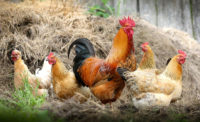USDA’s Animal and Plant Health Inspection Service (APHIS) is leading a growing response to a large outbreak of highly pathogenic avian influenza (HPAI). To date, the virus has been confirmed in 29 states, affecting more than 33 million domestic birds. APHIS is working closely with State animal health officials on joint incident responses in each of the affected states.
To help ensure APHIS can continue to provide critical rapid response activities, Agriculture Secretary Tom Vilsack approved the transfer of nearly $263 million from the Commodity Credit Corporation to APHIS to directly support the response efforts. The funding allows APHIS to continue its critical work with state and local partners to quickly identify and address cases of HPAI in the United States.
“Highly pathogenic avian influenza is a serious concern for our nation’s poultry industry, and we need to continue our nationwide response to minimize the impact,” said USDA Under Secretary for Marketing and Regulatory Programs Jenny Lester Moffitt. “The Agency’s actions during this ongoing emergency serve to safeguard U.S. poultry and egg producers and reduce the effects of avian influenza on agriculture and trade, while also enhancing readiness for other animal health emergencies.”
The Secretary is authorized to transfer funding from available resources (e.g., the Commodity Credit Corporation) to address emergency outbreaks of animal and plant pests and diseases.
Secretary Vilsack previously approved the use of approximately $130 million in emergency funding in mid-March 2022, and APHIS has used these funds to address nationwide HPAI detections to date. These funds have been used to address indemnity, diagnostics, field activities, and other emergency response costs.
HPAI is a serious disease and requires rapid response because it is highly contagious and often fatal to poultry. APHIS and officials from affected states are responding in accordance with Federal and State HPAI response plans, which include implementing quarantine restrictions, depopulating affected flocks, disposing of depopulated birds, cleaning and eliminating the virus from affected premises, and conducting surveillance in surrounding areas.
Source: USDA


Report Abusive Comment